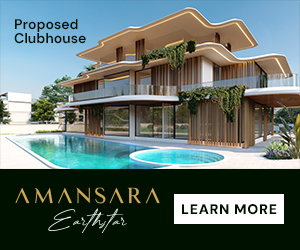- Blog
- Luxury Real Estate
- Mumbai
Why is There a Huge Disparity in Property Tax Between New and Old Luxury Towers in South Mumbai?
- 14th Feb 2024
- 1482
- 0

Never miss any update
Join our WhatsApp Channel
Understanding The Financial Burden of Luxury Living
In the heart of South Mumbai, luxury towers present a financial conundrum for residents. The illustrious 60-storey Imperial Heights in Tardeo, boasting 220 apartments of varying sizes, epitomizes south Mumbai's luxury living. Residents face monthly outgoings, including maintenance and property tax, that can soar from Rs 70,000 to an eye-watering Rs 2 lakh.
Apparently, Imperial Heights collected an initial corpus of Rs 500 per sqft from buyers, amassing a substantial financial reserve for the society today.
Maintenance Costs in Sky-High Developments
Lodha Park in Lower Parel, with its five towers spread over 11 acres, offers a glimpse into the operational costs of modern luxury living. Residents of three-bedroom apartments face monthly outgoings of about Rs 18,000, plus an annual BMC property tax of Rs 58,500. However, those in larger apartments encounter significantly higher maintenance charges and property taxes, as outlined by resident architect Moayyed Fatehi.
The Price of High-End Amenities
Operating a luxury residential development with amenities rivaling those of luxury hotels incurs considerable costs. A Lodha Group spokesperson emphasized that these expenses, although only about 0.5% of the capital value annually, are essential for maintaining high standards and ensuring the development's attractiveness and units' resale value. At Raheja Vivarea in Mahalaxmi, a vast array of amenities from clubhouses to sports facilities and full-building air conditioning justifies the charges, according to Ramesh Ranganathan, CEO of K Raheja Corp Homes.
The Evolution of Luxury Highrises
Reshmi Panicker, executive director at Knight Frank India, notes the evolution of Mumbai's highrises, now offering opulent amenities and services that command a premium. Yet, this evolution brings to light the stark disparity in property taxes between the city's new luxury developments and its older, established projects.
A Tale of Two Markets in The Same Location
Owners in older, esteemed buildings like those on Malabar Hill and Carmichael Road enjoy much lower monthly outlays. For example, a resident in the 1960s Woodlands on Peddar Road pays roughly Rs 12,000 a month, a stark contrast to the newer developments. Interestingly, Jolly Maker Apartments 1 in Cuffe Parade offers a unique model where flat owners receive an annual payout from the society, thanks to strategic leasing of property owned by the society in Nariman Point.

 Admin
Admin


Comments
No comments yet.
Add Your Comment
Thank you, for commenting !!
Your comment is under moderation...
Keep reading blogs